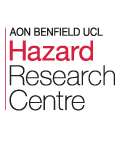Academic
NeoDys Risk Page
Submitted by jwalling on Wed, 23/05/2007 - 19:11. Academic – Asteroid Comet Impact – InternationalNEODyS provides information and services for all Near Earth Asteroids. Each NEA has its own dynamically generated home page providing information and services. The risk page lists all the known asteroids with non-zero probability of Earth impact from now untill 2080. (For a related site, see the link for NASA NEO Project.)
IRIS Seismic Monitor
Submitted by jwalling on Mon, 07/05/2007 - 08:47. Academic – earthquake map – EarthquakesSeismic Monitor allows you to monitor global earthquakes in near real-time, visit seismic stations around the world, and search the web for earthquake or region-related information. You can also view seismograms and make dataset requests via its WILBER interface.
Colorado Natural Hazards Center
Submitted by administrator on Thu, 19/04/2007 - 16:35. Academic – Drought – Earthquakes – Flash floods – Floods – International – Landslide – Mass movement – Mud slide – Rock avalanche – Severe local storm – Snow avalanche – Storm surge – Storm surge – Tornadoes – Tropical cyclone – Tropical storm – Tsunamis – Volcanic activity – Wildfires – WindstormsSince 1976, the Natural Hazards Center has served as a national and international clearinghouse of knowledge concerning the social science and policy aspects of disasters. The Center collects and shares research and experience related to preparedness for, response to, recovery from, and mitigation of disasters, emphasizing the link between hazards mitigation and sustainability to both producers and users of research and knowledge on extreme events.
Alaska Volcano Observatory
Submitted by administrator on Tue, 17/04/2007 - 20:27. Academic – alaska – monitoring – Regional – Volcanic activityThe Alaska Volcano Observatory (AVO) is a joint program of the United States Geological Survey (USGS), the Geophysical Institute of the University of Alaska Fairbanks (UAFGI), and the State of Alaska Division of Geological and Geophysical Surveys (ADGGS). AVO was formed in 1988, and uses federal, state, and university resources to monitor and study Alaska's hazardous volcanoes, to predict and record eruptive activity, and to mitigate volcanic hazards to life and property.
USGS Smithsonian Global Volcanism Program
Submitted by Tina Hyde on Thu, 22/03/2007 - 12:57. Academic – Volcanic activityThe GVP is unique in its documentation of current and past activity for all volcanoes on the planet active during the last 10,000 years. Smithsonian reporting on current volcanic activity dates back to 1968. During the early stages of an eruption anywhere in the world we act as a clearinghouse of reports, data, and imagery. This involves interaction with a worldwide network of contributors, which we refer to as the Global Volcanism Network. Our work is to help manage this early flow of information, making sure the right questions are asked and the right people contacted in a timely manner.
Global Drought Monitor
Submitted by administrator on Wed, 21/03/2007 - 14:07. Academic – Drought – InternationalThe Global Drought Monitor is a free internet application which monitors the severity of drought worldwide on an ongoing basis. The product will aid humanitarian relief by assisting warnings of potential food, water and health problems. The Global Drought Monitor will also benefit the general public, government and industry by improving awareness of droughts and their impacts.
SPIDER Network
Submitted by administrator on Wed, 21/03/2007 - 14:06. Academic – Drought – Earthquakes – Flash floods – Floods – Landslide – Mass movement – Mud slide – Rock avalanche – Severe local storm – Snow avalanche – Storm surge – Storm surge – Tornadoes – Tropical cyclone – Tropical storm – Tsunamis – Volcanic activity – Wildfires – WindstormsSince January 2006, seven organisations (University College London, Cambridge University, University of East Anglia, Portsmouth University, ActionAid UK, Coventry University and the Institute of Development Studies) have been working together to re-evaluate the role of science in disaster risk management.
Based around a series of linked meetings over two years, the network aims to explore the interface between physical and social science approaches to managing disaster risk and uncertainty.
Disaster Reduction Gateway
Submitted by administrator on Wed, 21/03/2007 - 14:05. Academic – Drought – Earthquakes – Flash floods – Floods – International – Landslide – Mass movement – Mud slide – Rock avalanche – Severe local storm – Snow avalanche – Storm surge – Storm surge – Tornadoes – Tropical cyclone – Tropical storm – Tsunamis – Volcanic activity – Wildfires – WindstormsDisaster Reduction Gateway is an initiative of the Benfield UCL Hazard Research Centre to promote information sharing and co-operation between people with an interest in disaster reduction.
On this site you will find links to the websites of organisations, groups and individuals who are involved in disaster reduction or support it in some way. All are based in the UK or Europe but many are active internationally.
EuroTempest
Submitted by administrator on Wed, 21/03/2007 - 14:03. Academic – International – WindstormsThe EuroTempest main objective is to support risk management, loss mitigation and decision making across a wide range of European industry with financial exposure to extreme and unseasonal weather.
Benfield UCL Hazard Research Centre
Submitted by administrator on Wed, 14/03/2007 - 22:32. Academic – Drought – Earthquakes – Floods – International – Mass movement – Tsunamis – Volcanic activity – Wildfires – WindstormsWith over fifty researchers and practitioners, Benfield UCL Hazard Research Centre is Europe's leading multidisciplinary academic hazard research centre. BUHRC comprises three groups: Geological Hazards, Meteorological Hazards & Seasonal Forecasting, and Disaster Studies & Management. The Centre is based at University College London, one of the world's leading universities and, along with Oxford and Cambridge, one of the UK's top three multi-faculty teaching and research institutions.



